The animal kingdom is full of fascinating and sometimes peculiar creatures that have evolved in extraordinary ways to survive in their environments. From mammals with strange physical traits to those with behaviors that defy logic, these species show just how diverse evolution can be. Some, like the platypus, seem to have been pieced together from multiple animals, while others, like the star-nosed mole, have developed sensory adaptations that make them unique. This article explores some of the oddest mammals and their remarkable evolutionary traits that continue to amaze scientists and animal enthusiasts alike.
Platypus

The Ornithorhynchus anatinus, or platypus, is one of the most bizarre mammals in the animal kingdom. It is a monotreme, meaning it lays eggs instead of giving live birth, a feature it shares with only a few other species. It has a unique combination of traits that make it appear almost mythical. With a duck-like bill, otter-like feet, and a beaver-like tail, it is well-suited for a semi-aquatic lifestyle. Its bill is highly sensitive, allowing it to detect electric fields generated by the movements of its prey, which is a rare ability among mammals. The males also possess venomous spurs on their hind limbs, making them one of the few venomous mammals. Even more remarkable, it closes its eyes, ears, and nose while diving, relying entirely on electroreception to hunt underwater. Despite its oddities, this species is perfectly adapted to life in its native rivers and streams of eastern Australia. Aside from its evolutionary adaptations, it can stay submerged for up to 10 minutes while foraging for food. Their ability to lay eggs yet nurse their young is another feature that makes them stand out in the mammal world.
Aye-Aye
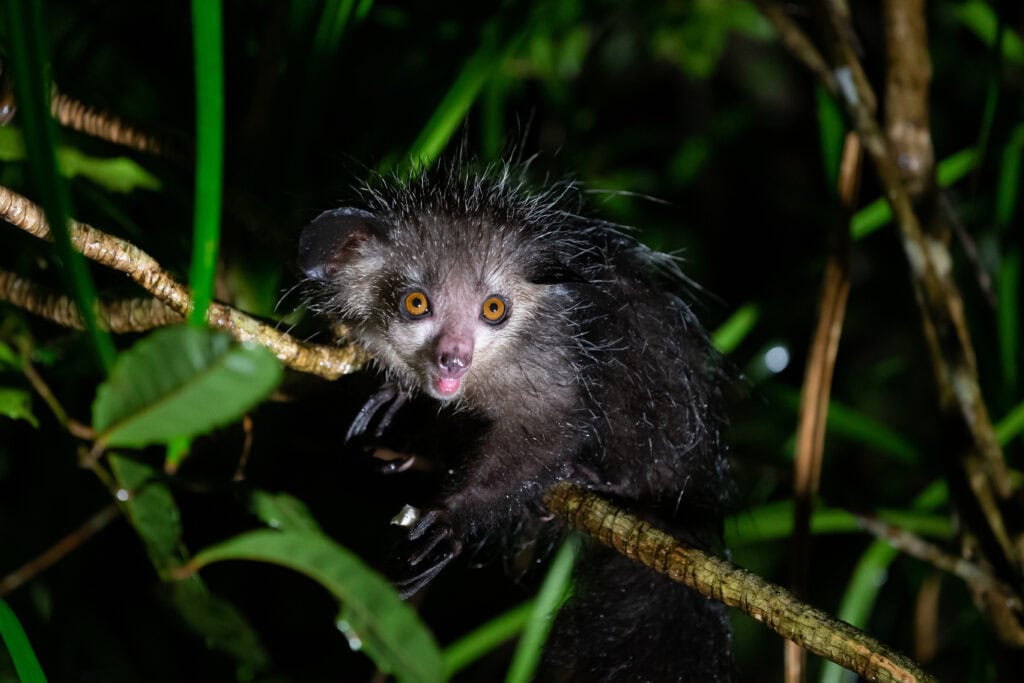
The Daubentonia madagascariensis, commonly known as the aye-aye, is a strange lemur found in Madagascar. Its most distinctive feature is its long, thin middle finger, which it uses for a method called percussive foraging—tapping on trees to locate grubs and then fishing them out with this specialized digit. Its large eyes help it see in the dark, making it an adept nocturnal hunter. Its teeth continuously grow like those of a rodent, allowing it to gnaw into wood to access its insect prey. With bat-like ears, it listens for hollow cavities in trees to find insects. Although it looks somewhat creepy, the aye-aye plays a vital ecological role by controlling insect populations. It has evolved a highly unique set of tools for survival that sets it apart from other primates. In Madagascar, it is often considered a bad omen due to its eerie appearance, which has contributed to its endangered status.
Saiga Antelope
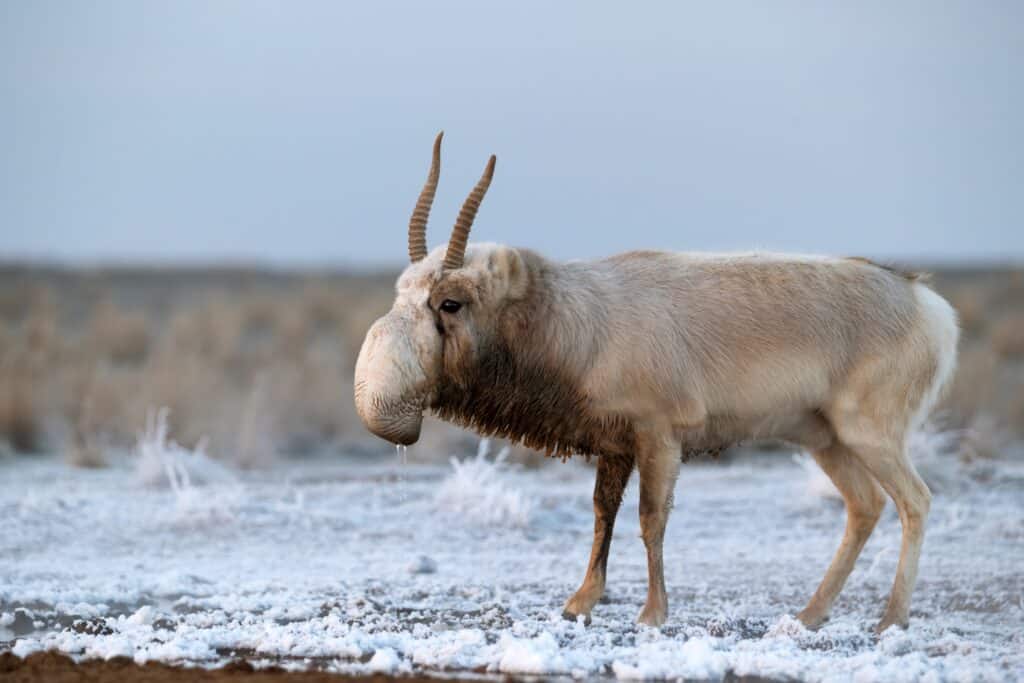
The saiga antelope (Saiga tatarica) is native to the steppes of Central Asia and is known for its distinctive, oversized nose. This unusual appendage is more than just an odd feature; it serves a critical purpose. The large, bulbous nose helps the saiga filter out dust during summer migrations and warms cold air in winter. This allows the antelope to survive in the harsh environments of the Eurasian steppes. The species has adapted to survive both extreme cold and heat, a rare dual adaptation among mammals. Unfortunately, it is critically endangered due to habitat loss and poaching for its horns, which are valued in traditional medicine. In recent years, conservation efforts have been ramped up to protect the saiga’s dwindling population. Scientists are also particularly interested in how this antelope’s unique nasal structure could inspire advancements in technology, such as filtration systems.
Maned Wolf
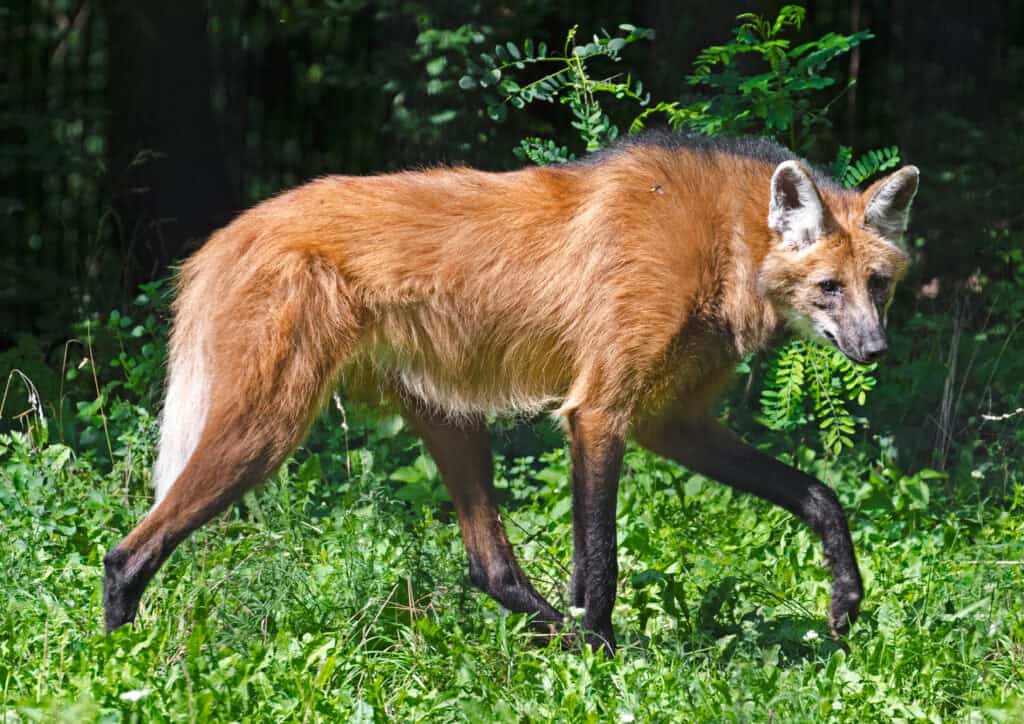
The maned wolf (Chrysocyon brachyurus) stands out for its fox-like appearance and unusually long legs, which are an adaptation to the tall grasses of South America’s savannas. This mammal is neither a true wolf nor a fox, despite its name. Its long legs help it see over tall vegetation while hunting, an evolutionary trait that allows it to efficiently track prey such as rodents and birds. Another peculiar aspect of the maned wolf is its diet, which is omnivorous—unlike most other canines. It consumes a significant amount of fruit, particularly the lobeira or “wolf apple,” which makes up a large part of its diet. This fruit-eating behavior helps with seed dispersal, contributing to the health of its ecosystem. Its long legs also provide an advantage during the wet season when grasses grow even taller, demonstrating how this species has finely tuned its body to its environment. Additionally, its solitary nature contrasts with the social behaviors of other canines, making it an outlier in the canine family.
Narwhal
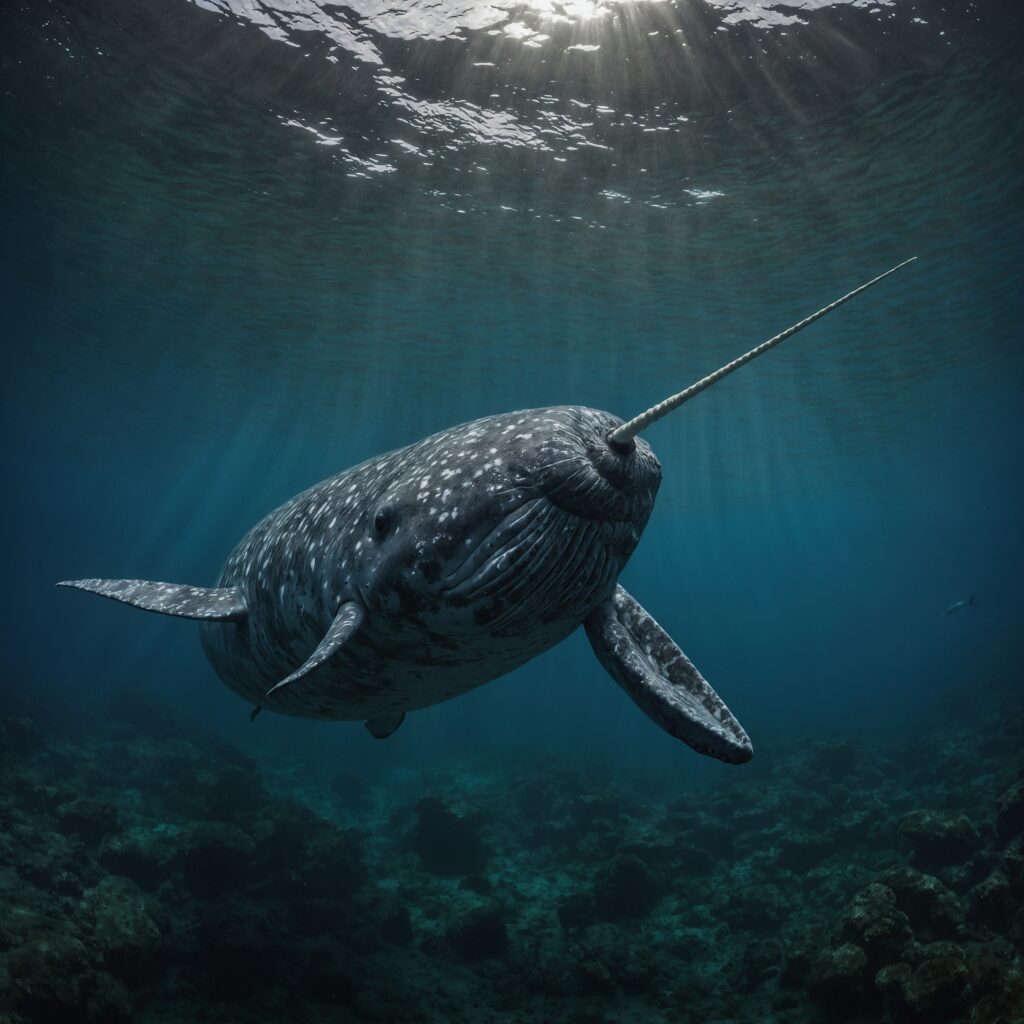
The narwhal (Monodon monoceros) is often referred to as the “unicorn of the sea” due to the long, spiraled tusk that protrudes from its head. This tusk is actually an elongated tooth that can grow up to 10 feet long and is used for sensing environmental conditions and social interactions, though its exact function is still debated. Found in Arctic waters, they are well adapted to life in cold environments, diving up to 1,500 meters to hunt fish and squid. Their bodies are streamlined for swimming through icy waters, and they have a layer of blubber to insulate against freezing temperatures. They use echolocation to navigate and hunt in the dark depths of the ocean, a skill they share with other cetaceans. This remarkable adaptation allows them to thrive in environments where few mammals can survive. In addition to their famous tusks, narwhals can slow their heart rate to conserve oxygen during deep dives, an essential adaptation for hunting at such extreme depths.
Wrinkle-Faced Bat

The wrinkle-faced bat (Centurio senex) is one of the most unusual-looking bats due to its complex and wrinkled facial structure. Found in Central and South America, this bat’s facial flaps serve multiple purposes, including the storage of fruit while foraging. Males have additional flaps with scent glands used for attracting mates. The bat’s highly specialized skull allows it to generate up to 20% more bite force than other fruit-eating bats of a similar size, enabling it to consume tougher fruits. Its leathery facial structure may also help in sound reflection, aiding in echolocation. Despite its odd appearance, it plays a crucial role in seed dispersal, which is vital for the ecosystem. Researchers have found that its complex facial anatomy may have evolved as a result of sexual selection, as females seem to prefer males with more pronounced facial features. This species’ adaptability to various fruit types also contributes to its success in diverse environments.
Star-Nosed Mole
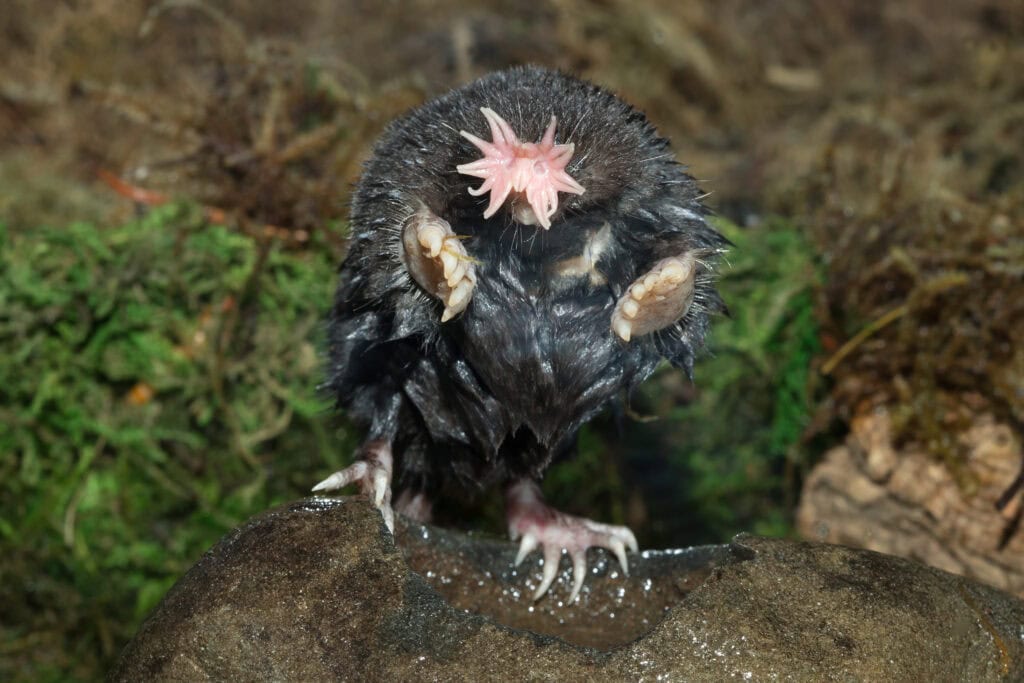
The star-nosed mole (Condylura cristata) has one of the strangest adaptations of any mammal: a star-shaped set of 22 fleshy appendages at the tip of its nose. These appendages are packed with more than 25,000 sensory receptors called Eimer’s organs, which allow the mole to detect the slightest vibrations and chemical signals in the soil. This adaptation makes the star-nosed mole one of the fastest foragers in the animal kingdom, capable of identifying and consuming prey in less than 0.5 seconds. Found in wetlands and marshes of North America, this mole is semi-aquatic, using its highly sensitive nose to find food both on land and underwater. Its sense of touch is so refined that it can detect prey invisible to other predators. It also has poor eyesight, relying almost entirely on its sense of touch to navigate its environment. Recent studies suggest that its unusual sensory system could provide insights into developing better tactile technology for humans. Additionally, their ability to hunt underwater has led researchers to explore how they use bubbles to detect prey in murky waters.
Okapi
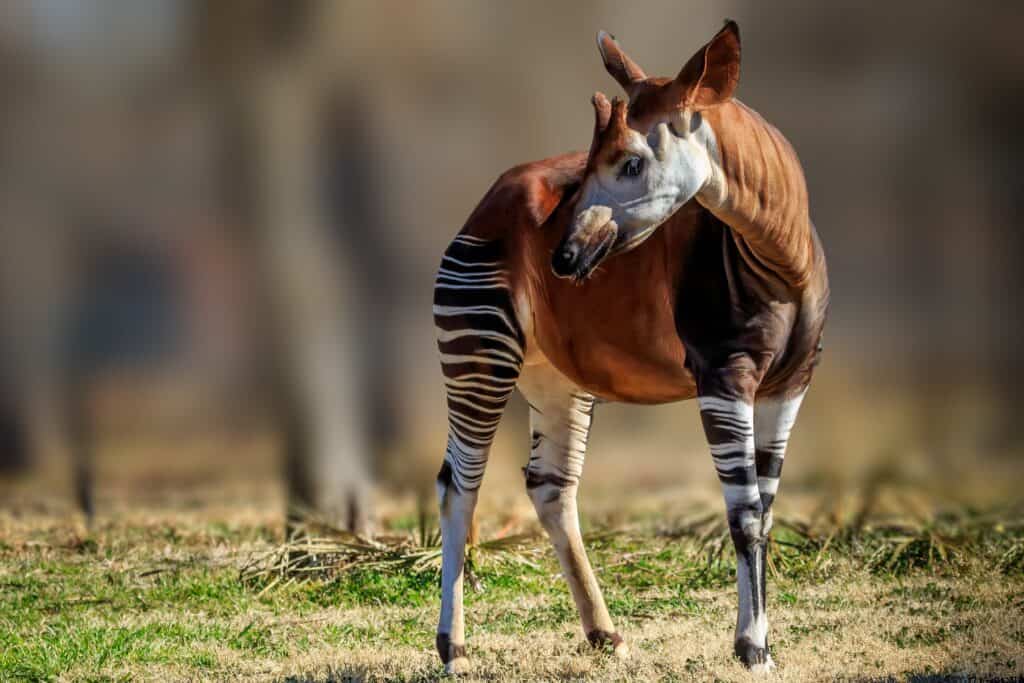
The Okapia johnstoni, or okapi, is often referred to as the “forest giraffe” due to its peculiar mix of features. Native to the dense rainforests of the Congo, it resembles a zebra with its striking black-and-white striped legs, but its closest relative is actually the giraffe. Unlike its long-necked cousin, the okapi has a much shorter neck, adapted to navigating the dense undergrowth. Its long, prehensile tongue allows it to strip leaves from trees with incredible precision. Its reddish-brown body helps it blend into the forest shadows, offering camouflage from predators. Unlike many forest animals, the okapi relies heavily on its acute hearing rather than sight, a crucial adaptation in its dark, densely vegetated habitat. Another interesting fact is that okapis communicate with infrasound, allowing them to send signals that are undetectable to predators.
Tenrec
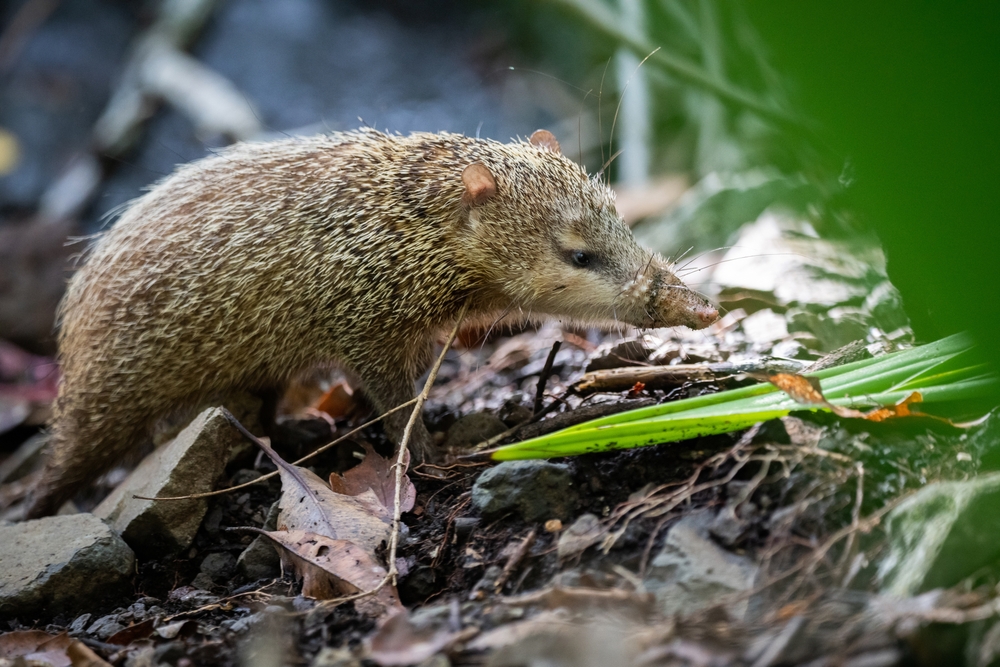
Tenrecs (Tenrecidae), found in Madagascar, are some of the most evolutionarily diverse mammals, with over 30 species that have adapted to a wide range of habitats. What makes them particularly unusual is their striking resemblance to other animals such as hedgehogs, otters, and even shrews—despite having no close evolutionary relation. Some species of tenrec have quills similar to those of a hedgehog, while others are more aquatic like otters. One of the most remarkable traits of some tenrecs is their ability to use echolocation, which is typically seen in bats and dolphins but is rare in terrestrial mammals. They also possess the ability to enter a state of torpor, which helps them survive the harsh dry seasons in Madagascar by significantly lowering their metabolic rate. They can even communicate through a variety of sounds, including ultrasonic squeaks and clicks, further showcasing their wide array of adaptive behaviors.
Pangolin
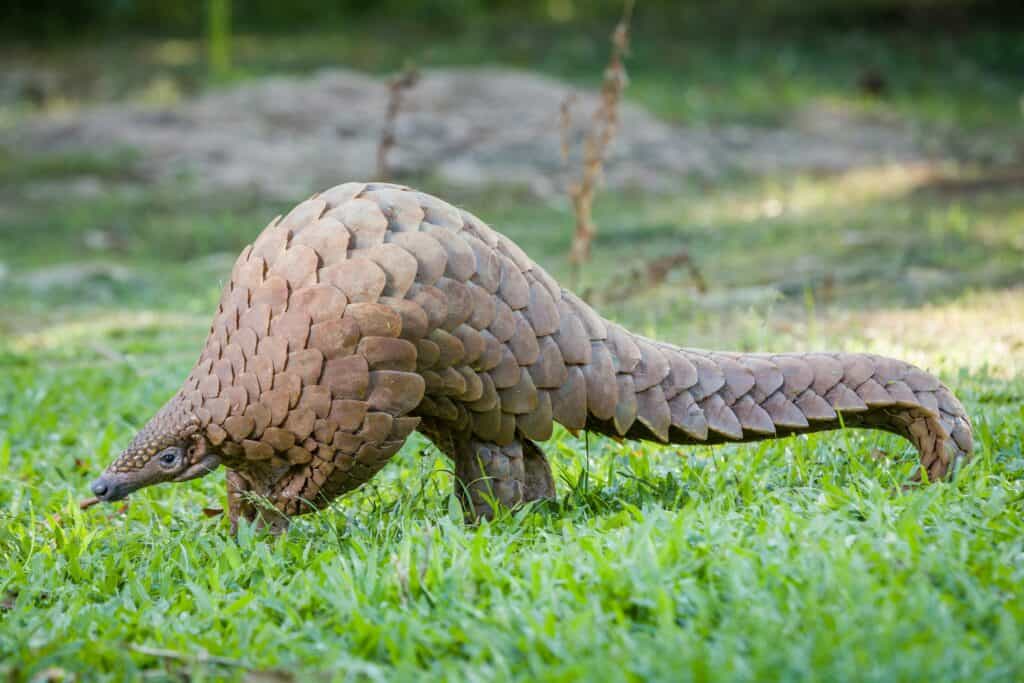
The pangolin (Manis spp.) is an armored mammal covered in large, protective keratin scales, which makes it one of the most distinctive animals in the world. Native to parts of Africa and Asia, it has evolved to rely on its tough, overlapping scales for protection from predators. When threatened, it curls into a tight ball, much like an armadillo, with its scales forming an impenetrable barrier. They are specialized insectivores, using their long, sticky tongues to capture ants and termites from deep inside nests. Another peculiar adaptation is their lack of teeth; instead, they use small stones and keratin spines in their stomachs to grind up food. They are solitary and nocturnal, relying on their strong sense of smell to locate prey in the dark. Unfortunately, they are the most trafficked mammals in the world, primarily for their scales, which are falsely believed to have medicinal properties.
Naked Mole Rat
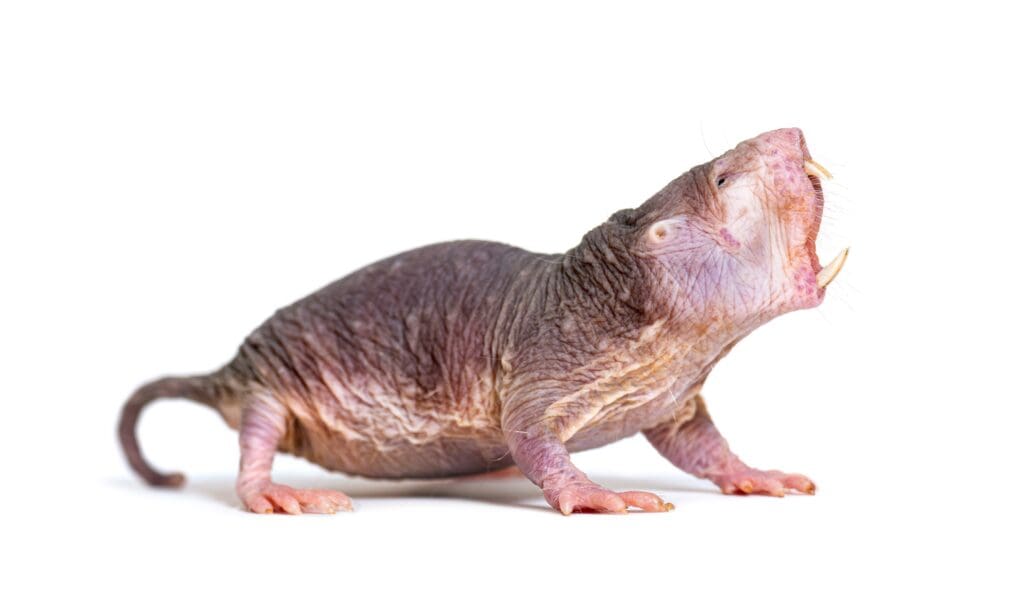
The naked mole rat (Heterocephalus glaber) is one of the most unusual rodents, known for its remarkable resistance to cancer and ability to survive in low-oxygen environments. Found in East Africa, this hairless, nearly blind mammal thrives in underground burrows where oxygen levels are low. It can survive without oxygen for up to 18 minutes by switching its metabolism to one that relies on fructose rather than glucose. Unlike most mammals, they live in eusocial colonies similar to those of bees or ants, with a single breeding queen and non-reproductive workers. They also possess a unique pain insensitivity, allowing them to live in conditions that would be intolerable to most other species. Interestingly, they can live up to 30 years, making them one of the longest-living rodents. Their ability to thrive in such harsh conditions has made them a focus of scientific research into aging and disease resistance.
This article originally appeared on Rarest.org.
More from Rarest.org
20 Exotic Birds in Danger of Disappearing from Our World
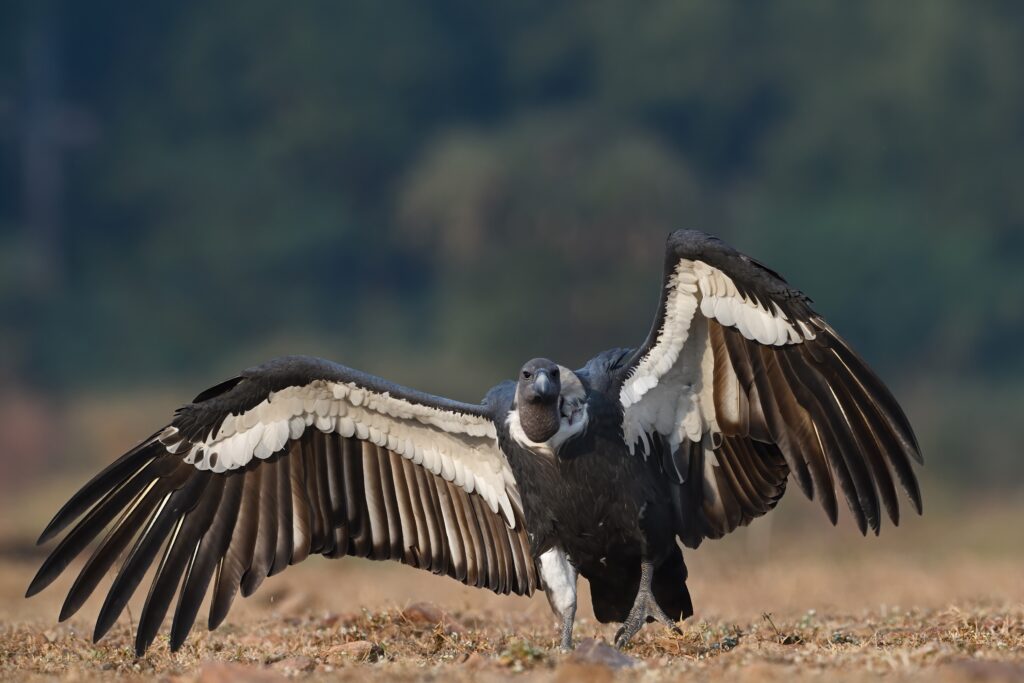
Exotic birds are among the most vibrant and unique species on our planet. However, many of these stunning creatures are at risk of vanishing forever. Habitat destruction, climate change, and illegal poaching have contributed to their dwindling populations. Read More.
14 Enigmatic Islands with Unexplained Features

Islands hold an air of mystery, often shrouded in legends and unexplained phenomena. Some islands, however, go beyond typical intrigue, puzzling explorers and scientists alike. These enigmatic landforms have baffled visitors with strange artifacts, ancient ruins, and unexplained features that defy logical explanation. Read More.
8 Magazine Titles That Defined an Era but Are Now Out of Print

Magazines once shaped how we viewed the world. Their covers graced newsstands and coffee tables, symbolizing culture and news for generations. Some titles captivated audiences, defining an era, but are no longer in print. Read More.
